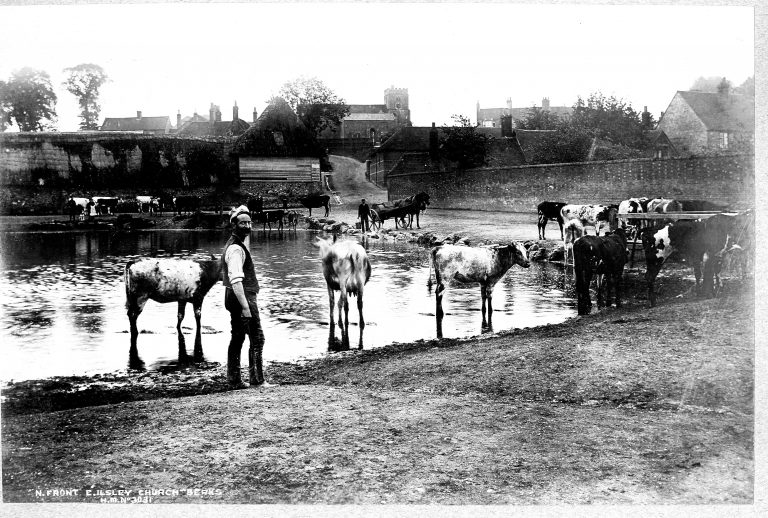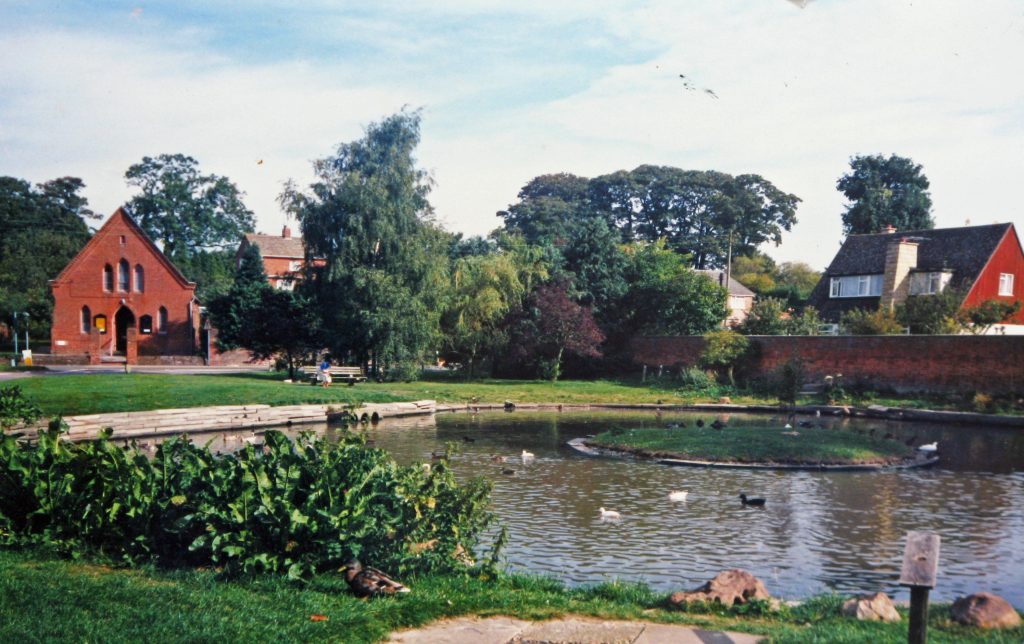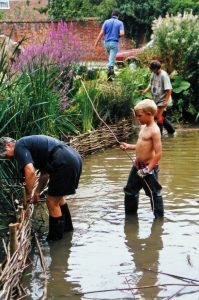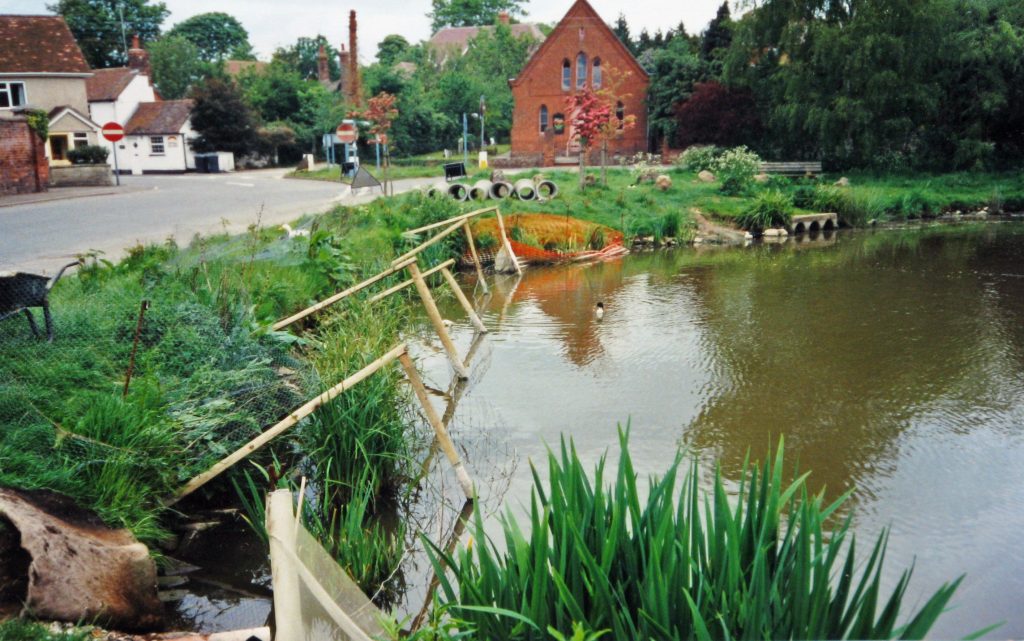With no watercourses in the village (apart from during very wet winters when the Pang stream comes above ground), the village pond was a vital place for watering of stock in the past, before the advent of mains water supplies. Away from the centre of the village, all water had to be drawn from wells, a back-breaking job. The pond also served as drainage for the roads, as it lies at the lowest part of the village. Nowadays, its prime function is for flood alleviation as well as being a green space for everyone (including wildlife) to enjoy.

In earlier times the pond was fairly shallow and muddy, the banks merging with the dirt roads and was probably quite smelly! Early parish council minutes record that the mud had to be cleared from the pond, the onus being on local farmers to supply horse and carts and manpower to do this. The men working on this were paid 2 shillings a day per man in 1896 by the parish council for this. With the increasing motor traffic, by the mid-1960s the pond was getting very polluted from the run-off from the roads (now tarmaced). There was some discussion at that time as to whether it would be best to fill in the pond and just have a grassy area. Happily, this did not happen and it was decided to carry out the first of several projects to dredge out the excess silt and plant vegetation to make it more of an amenity.
In the 1987/88 a major makeover of the pond area was carried out, with the creation of a central island in the pond (intended to act as a refuge for the ducks) and major planting of trees and shrubs. The banks were now well-defined and edged with stone slabs. However, by 1990 these slabs were collapsing into the pond and the island was overgrown with nettles. The duck population had also got too large and was starting to destroy its own haven – stripping the bark from the original willow plantings.


The Pondwatch Group was created in 1990 by several residents of Hildesley Court in collaboration with members of the Conservation Group, to informally keep an eye on the pond and its environs. They started by carrying out a survey of the earlier plantings to see which had not survived and needed replacement. Individual trees were ‘adopted’ by residents to check on their progress, provide water in dry spells and to ensure that nettles did not choke the new plantings. Children in the village also helped with clearing nettles. By 1992 it was recognised that further work was needed to get the pond back into a good state. After much deliberation, the restoration work was carried out in 1995. This time the walls were gradually sloped down to the water’s edge around most of the pond and the central island removed. Most of the ducks were also removed to enable the new plantings of aquatic species to develop. The steeper banks were lined with willow hurdles to retain a gravel in-fill that was topped with soil to form a base for further plantings. Netting had to be strung on poles to discourage the ducks again from destroying the new plantings!


